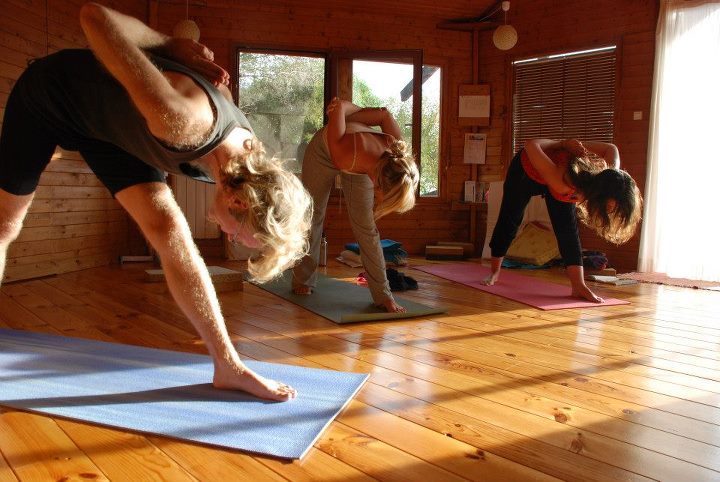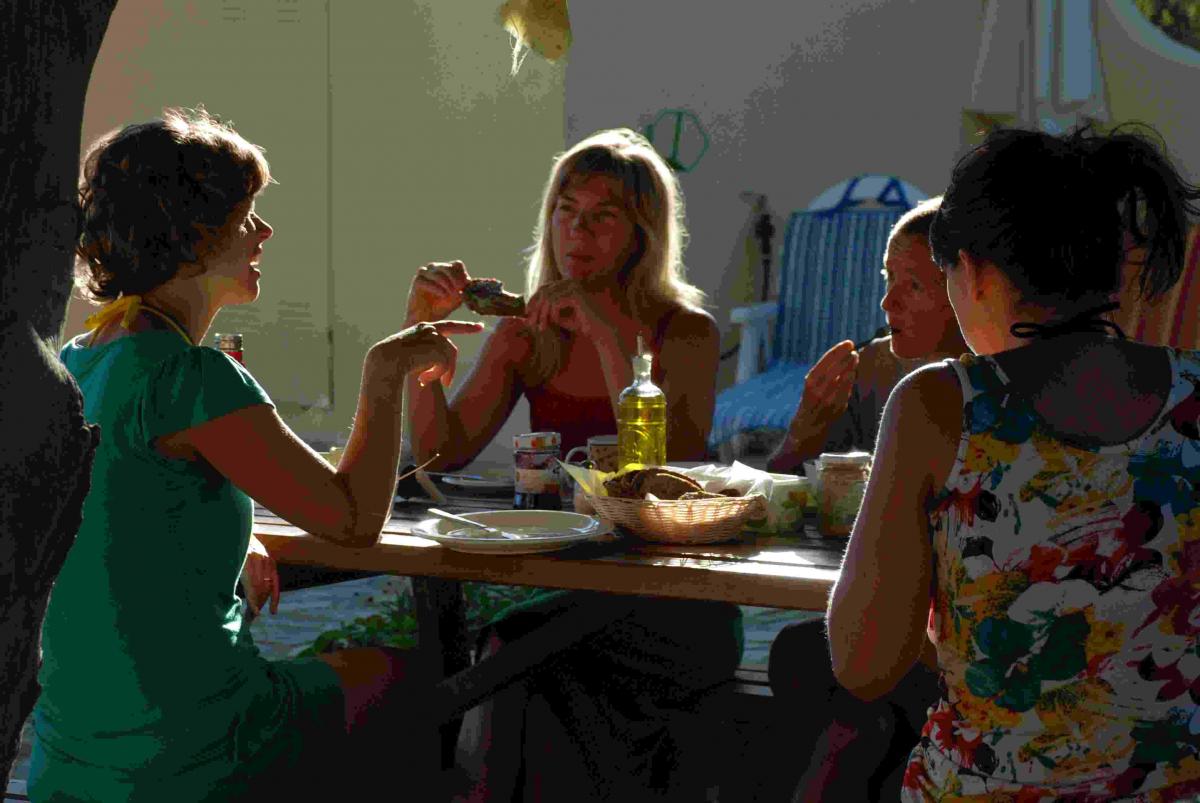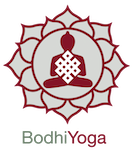Bodhiyoga yoga teacher training course (A review) 2012: Spain with Sudaka & Sadhita
The Bodhiyoga teacher training course this year took place in Spain at Solterreno, a retreat venue run by Dh. Bodhin who is a long term expat resident and once worked around the Valencia Buddhist center. The course was presented by its founders Dh.Sudaka and Dh.Sadhita. Bodhiyoga has had a long gestation period of many years, followed by more than a year of writing and preparing the material.
Sudaka and Sadhita have been working together for over seven years presenting retreats along with resident Dhanakosa teachers. As of next year they will be taking more of a leading role in one retreat each year at Dhanakosa to present a more overtly 'Buddhist Hatha yoga' based upon the Satipattana teachings of the Buddha.
Four trainee teachers all reported that for them the course had been a success and worked well to help them deepen their Dharma practice as well as train them to be yoga teachers.
For many years Hatha yoga and Buddhism have intermingled. Yoga has stood the test of time. Since the
intermingled. Yoga has stood the test of time. Since the
sixties, this slightly mystical art has been practiced by Buddhists, Christians and Hindus alike. There has been
evidence also of forms of Hatha yoga arising in Tibet and preLatin America that seem to support the somewhat ambiguous origins of the Hatha yoga practices that we have inherited in the west as being not necessarily aligned to just one spiritual tradition. It is also evident that many of the modern day practices have been developed by some of the yogi luminaries from the Hindu tradition as late as the period of British colonialism in India.
From the point of view of Bodhiyoga, the development of merging some aspects of the Buddhist teaching (mainly those on meditation and mindfulness & loving kindness) with the asana and breathing practice elements of yoga is not exactly something new but rather an attempt to work out the union in greater depth and detail. From the Buddhists perspective, yoga can be used more consciously as an indirect means of self development. An activity of this kind can help to integrate us and create self awareness. It is a simple process that many are drawn to because it so obviously helps a mind that is full of busyness to become focused and steady, at least to some extent.
Yoga practiced in the right way can be a useful aid to the development of a serious meditation practice.
The course bases itself in the Satipatthana. Essentially, the training covers the area of how to use Satipatthana in a day to day way and how to use yoga as a tool
for cultivating the various elements of the awareness taught in the system. During the training the students were encouraged to have a reflective and critical approach to teaching.
Teaching skills were learnt as well as a thorough introduction to anatomy and physiology.
There were workshops on how to look and observe (which we related to the refrain in the Satipattana of being aware 'externally' as well as internally) and how to notice the physical and mental limitations of a student and what to do to adapt things for each individual.
We explored the yoga tradition from the perspective of Patanjali, the so called father of the Raja yoga system. From this study, we clarified the relevant correlations between the Buddhist meditation tradition and yoga. We have decided to include in future years, more exploration of the Satipattana in the context of yoga in terms of working with pain. In other words, we have taken confidence that we can use the Buddhist tradition fully to explore yoga.
What we have created is a course of Hatha yoga teacher training, but from the perspective of a practicing
training, but from the perspective of a practicing
Buddhist. For this to have any meaning whatsoever spiritually, inevitably it has to make reference to teachings on mindfulness and awareness. We are not in any way teaching that yoga is somehow a spiritually beneficial discipline in and of itself. It might be, but it really depends like all other things from the Buddhist perspective on the motivation, intention and state of mind during the activity.
This is where the Satipattana comes in. In the first category of the Satipattana, in the more original form of the Satipatthana presentation the teaching makes reference to awareness of the body, its position and its movement. Along with this is a more detailed unfoldment of how to work with bodily processes and breathing as ways to cultivate self awareness. From here the teaching of Satipattana broadens and deepens to other elements of experience including mind, emotions and hedonic feeling tone. Later still the teaching aims itself in a more overtly Buddhistic sense to reflective practice and contemplation.
We have taken all of these elements and applied them into the context of yoga, putting more emphasis in the first course (module I) to the first three categories of Satipattana which are more immediate and accessible.
It has been stated more than once that Hatha yoga is nonaligned religiously speaking; that it stands alone as a discipline and practice for the use of spiritual
aspirants of any tradition. Therefore, one can just as well justify the use of yoga by Buddhists for the end of developing awareness as can those of other traditions for their own ends. One can also simply use yoga for improving ones overall health and self confidence on a more mundane level. Yoga is and always has been a versatile tool. Like the Satipattana, it is a flexible system that has different applications depending upon the experience of the practitioner.
The course was intensive and hard work for the students. They not only had to prepare before they came to do their contact hours in Spain, also they had a regular schedule of study and practice sessions during the course. As well, postcourse contact hours, the students need to go away and complete a series of assignments including gaining more live teaching hours, in order to qualify as Bodhiyoga teachers. All in all, at the level of module one the student completes around 300hrs of study and training. Level two (500hrs) brings in more training around working with pain through awareness (Mindfulness based MBCT work) as well as teaching people how to teach the fundamentals of meditation.
The course is aimed at existing students from other schools of yoga as well as those of the initial 200hr training within the Bodhiyoga system. To do this course one must first attend one of the precourses either at Dhanakosa, or in Spain with Sudaka and Sadhita. In this way, the potential student is 'brought up to speed' by being introduced to Satipattana skills and meditation teaching, if not already grounded in either.
What we would like to see developing is more of a movement wide initiative to train would be yoga teachers around Triratna centers. Given that yoga is still a growing industry and that just about all Triratna centers rely to some extent on revenue from yoga, it would be good to start creating a more specifically Buddhist yoga oriented teaching. Therefore, we intend to contact all centers around the world to inform councils of what we are doing. We'd like explore the possibility of people being sponsored for their training by centers (or partially sponsored) in return for the teacher giving back to the centers through their income the costs of or partial cost of the training fees. We hope that this will become a new growth area within the Triratna. We'd be pleased to hear from anyone interested in the training, or yogis with experience that might want to discuss the area of work that we are developing.
Given that the course brought together people from outside geographically (as far as the USA and Turkey) as well as, people from the UK, we feel that the teaching program has potential for communicating a new approach to yoga practice and training good yoga teachers. Part of the study involves covering material from two texts: 'Living with awareness' and 'Living with Kindness'. Both of these books give insights into how one can live an aware and meaningful existence through yoga, meditation and regular practice.
As of next year Bodhin will join us on the 200hr and 500hr modules as a guest teacher presenting elements of Satipattana for pain and some MBTC work.
We hope that this is of interest to you and do pass on the article to anyone around your yoga or meditation centre that may be interested.
Many thanks, The Bodhiyoga team.
- bodhiyoga's blog
- Log in to post comments


